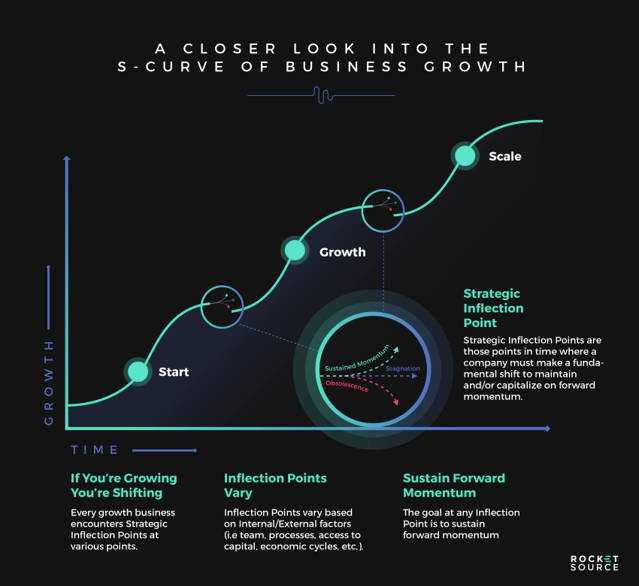- An acquisition or divestiture
- A refresh of the senior management team
- Moving into a new market geography or vertical industry
- Launching a new product or service
External influences can be:
- A shift in industry trends (this is almost constant in IT!)
- A change in the way that clients consume your product (eg. via the public cloud)
- A new competitor is shaking up the market
- A global pandemic!
Secret Sauce?
The elusive secret sauce is predicting these inflection points and being ready in the market when they occur. Since that isn’t a reality, the recommended course of action is to ensure that you have an agile and responsive go-to-market strategy in readiness to execute and ride the next wave. This is almost impossible when internal marketing resources are already stretched thin. Which is why an increasing number of tech companies are building a portfolio of external subject matter experts in key areas such as value definition and content creation, channel/partner marketing, digital marketing, and marketing automation.
These inflection points, when they occur, are extremely disruptive to sustained business growth. If you look at the logos of some of the major tech companies that I have worked at, NONE of these have experienced a linear upward progression. It’s more common for business growth to scale rapidly, plateau, and possibly slump ever-so-slightly before launching into further growth. *See image
Certainly, the concept of strategic inflection points isn’t new. But what is new is the speed at which they are occurring. This is especially exacerbated by the rate of development and change in the tech industry. Whereas in the past, companies could expect to encounter an inflection point once every eight to ten years or so. With the advent of advanced technologies such as cloud and AI, the timelines are becoming more and more condensed, shrinking to every two years (on average). These dips on the S Curve of Business pose an opportunity to propel your business into its next evolution. But today, with the amount of digital disruption in the market, inflection points aren’t just opportunities — they signal a need for change.
Summary
From a marketing perspective, today’s shrewd CMO has external resources that she can bring to bear at short notice to ensure that the business is rapidly re-positioned at the right time, in the right place, with the right messaging….and to the right audience. Ready to leverage the next opportunity for growth and ensuring continuity of business – riding the next wave.
Image source: https://www.rocketsource.co/blog/s-curve-of-business/





